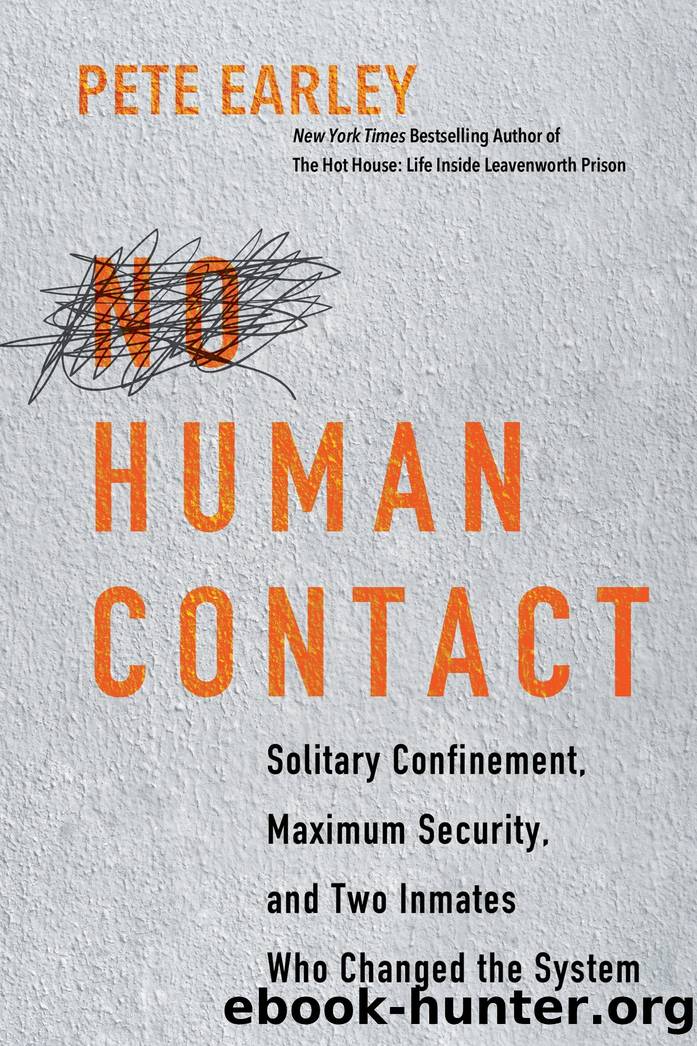No Human Contact by Pete Earley

Author:Pete Earley [Earley, Pete]
Language: eng
Format: epub
Publisher: Citadel Press
Published: 2023-02-16T00:00:00+00:00
CHAPTER NINETEEN
If anyone in Atlanta had grounds for revenge, I did.
âTHOMAS SILVERSTEIN
ERES LA GUARDIA ASESINA?â ONE OF THE INMATES, WHO HAD PRIED OPEN the steel door of Silversteinâs side pocket cell, asked him.
âNo hablo espanol,â Silverstein stammered, recalling one of the few phrases heâd picked up from his Mexican Mafia pals.
âAre you the guard killer?â a different prisoner in the doorway asked in accented English.
Silverstein eyeballed the men watching him. It was obvious to him that they were Cubans.
âYeah, I am.â
The men began to cheer.
The Cuban prisoners were rioting. The Atlanta prison was in flames in November 1987. Their grievances had been boiling for years because of events dating back to the spring of 1980. Cubaâs economy was collapsing and desperate Cubans swarmed onto the Peruvian embassy grounds in Havana, seeking asylum. An angry Fidel Castro declared that any Cuban who wanted to flee could escape from the island, but only through the tiny port at Mariel. Thousands swarmed there, only to learn that no country wanted themâexcept the U.S. President Jimmy Carter said he would welcome the Cubans with âopen arms and an open heart.â Some 125,000 Cubans headed for Florida during a three-thousand-boat flotilla.
Castro had mixed 23,000 inmates from his prisons and mental asylums with the fleeing others. An overwhelmed U.S. Immigration and Naturalization Service only caught 250 of Castroâs âundesirables.â While most Cuban refugees were welcomed, several thousand were sent to detention camps, mostly at old army bases, for investigation and processing. As the months dragged on, conditions at the camps deteriorated. Frustrated detainees rioted in 1983. Four thousand were transported to BOP facilities. A federal appeals court ruled the Cubans were not U.S. citizens, which meant they were not protected by due process and could be held indefinitely in prisons until Castro agreed to take them back. The State Department got Castro to accept roughly 2,600, but the dictator changed his mind after President Ronald Reagan launched Radio MartÃ, a government-funded station that blasted Cuban airways with anti-Castro news. The âgusanosââworms, as Castro called themâhad become the BOPâs problem.
The bureau began shipping the Cubans to its penitentiary in Atlanta. Not all of them were criminals or mentally ill. Government guidelines were so poorly written that Cubans, who already had been processed and freed, were subject to arrest and deportation if they were stopped by police for any reason, even traffic violations. Each month, hundreds arrived. The BOP crammed eight Cuban prisoners into ten-by-twenty-foot cells with a single toilet. Conditions became inhumane. To ease the overcrowding, the BOP spent $17 million to construct an âAlien Detention Facilityâ in Oakdale, Louisiana. Security was lightâa single twelve-foot-tall chain-link fenceâbecause one thousand of the nineteen hundred Cubans detained there had been approved for release and were simply waiting for somewhere to go. Months passed. Only eighty were freed. Tempers flared. A second chain-link fence was added with bundles of razor wire dropped between the two barriers.
In Atlanta, Cubans began losing hope. Seven killed themselves and 158 others attempted suicide. Others became violent.
Download
This site does not store any files on its server. We only index and link to content provided by other sites. Please contact the content providers to delete copyright contents if any and email us, we'll remove relevant links or contents immediately.
| Espionage | Hoaxes & Deceptions |
| Murder & Mayhem | Organized Crime |
| Serial Killers | White Collar Crime |
Mindhunter: Inside the FBI's Elite Serial Crime Unit by John E. Douglas & Mark Olshaker(9112)
Wiseguy by Nicholas Pileggi(5618)
Hitman by Howie Carr(4984)
Room 212 by Kate Stewart(4968)
Secrecy World by Jake Bernstein(4599)
Killers of the Flower Moon: The Osage Murders and the Birth of the FBI by David Grann(4353)
Papillon (English) by Henri Charrière(4152)
Breaking Free by Rachel Jeffs(4121)
Killers of the Flower Moon by David Grann(3907)
Say Nothing by Patrick Radden Keefe(3850)
American Kingpin by Nick Bilton(3719)
The Secret Barrister by The Secret Barrister(3566)
Molly's Game: From Hollywood's Elite to Wall Street's Billionaire Boys Club, My High-Stakes Adventure in the World of Underground Poker by Molly Bloom(3448)
Mysteries by Colin Wilson(3368)
In Cold Blood by Truman Capote(3274)
Signature in the Cell: DNA and the Evidence for Intelligent Design by Stephen C. Meyer(3002)
I'll Be Gone in the Dark by Michelle McNamara(2991)
Rogue Trader by Leeson Nick(2950)
Bunk by Kevin Young(2905)
